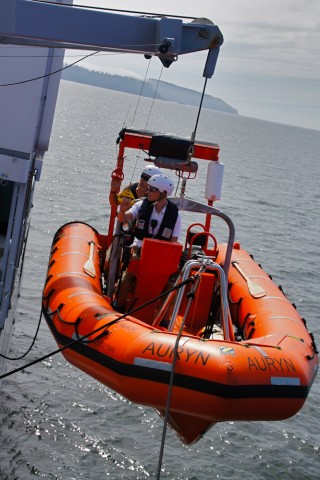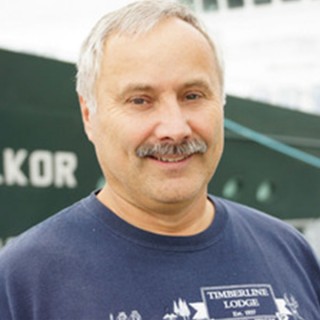Today, work along the Tully and Juan de Fuca Canyons has brought the oxygen story closer to focus and confirmed recent work by other scientists.

Along the way, the team also made a trip to shore and began working on a high-resolution map of a submerged pinnacle. Toward the end of the day, with the team rather dazed from continuous work and less confused thanks to growing understanding of the region’s water movements, a surprise came: bubbles.
One key effort has been running the Moving Vessel Profiler (MVP) along the deepest axis, or thalweg, of Tully Canyon, which runs more or less parallel to Vancouver Island (see yesterday’s blog for an explanation of why this area is of growing interest). The team began surveys at about 300 meters down in the Juan de Fuca Canyon, which, as you might surmise, runs out from the Juan de Fuca Strait. They worked up over the La Perouse Bank, and ended near Barkley Sound and Bamfield. The thinking has been that the Juan de Fuca Canyon is a major thoroughfare for upwelled water from offshore on its submerged path inland. But questions remain about where some of the water is going.
To Ponder and Discuss

The MVP profiles are clearly showing that some likely upwelled water does in fact branch off from the Juan de Fuca and move up Tully Canyon, as the team suspected based in part on yesterday’s MVP survey results. And there’s evidence this water is transforming as it follows this side route, mixing with other water and evolving due to bacterial and other activity.
Further along the Tully transect, they found evidence that the seafloor topography has a significant effect on the flow, with internal jumps and waves forming near ridges and banks. “Pondering and discussion are continuous,” says Richard Dewey.
In the afternoon, Falkor took a side trip toward shore so that the crew could make a small boat run to Bamfield to drop off Stéphane Gauthier, who has to get back to Victoria to prepare for yet another cruise.
Leaving Bamfield, the team took the opportunity to train Falkor’s multi-beam bottom mapping sonar on the nearby Folger Deep and Folger Pinnacle regions, where Ocean Networks Canada maintains several instrument platforms. Karen Douglas, a Geographic Information Systems (GIS) specialist, directed the work that produced the raw map shown at right. Later, this data will be further cleaned and processed to make an even more detailed map that will aid ONC in planning future cable routes and experiments at the pinnacle.
Hey, What’s That??
The long day ended with further MVP work far to the west on a steep ridge of La Perouse bank. Chris MacKay has repaired the malfunctioning “fish” sensors, so the team is now able to get even better data, including rapid oxygen measurements, during the surveys. They ran back and forth so many times they almost lost track, all in an effort to fully map the water flows across an entire tidal cycle.
On one pass, the team spotted unexpected bubble plumes coming up from the bottom. No telling yet what this is, but the team decided to add additional sonar work in hopes of figuring out what they’re seeing. And so, the fire hose of data kicks up yet another notch. Dewey says, “It’s a good thing this SOI ship has terabytes of disk space.”

